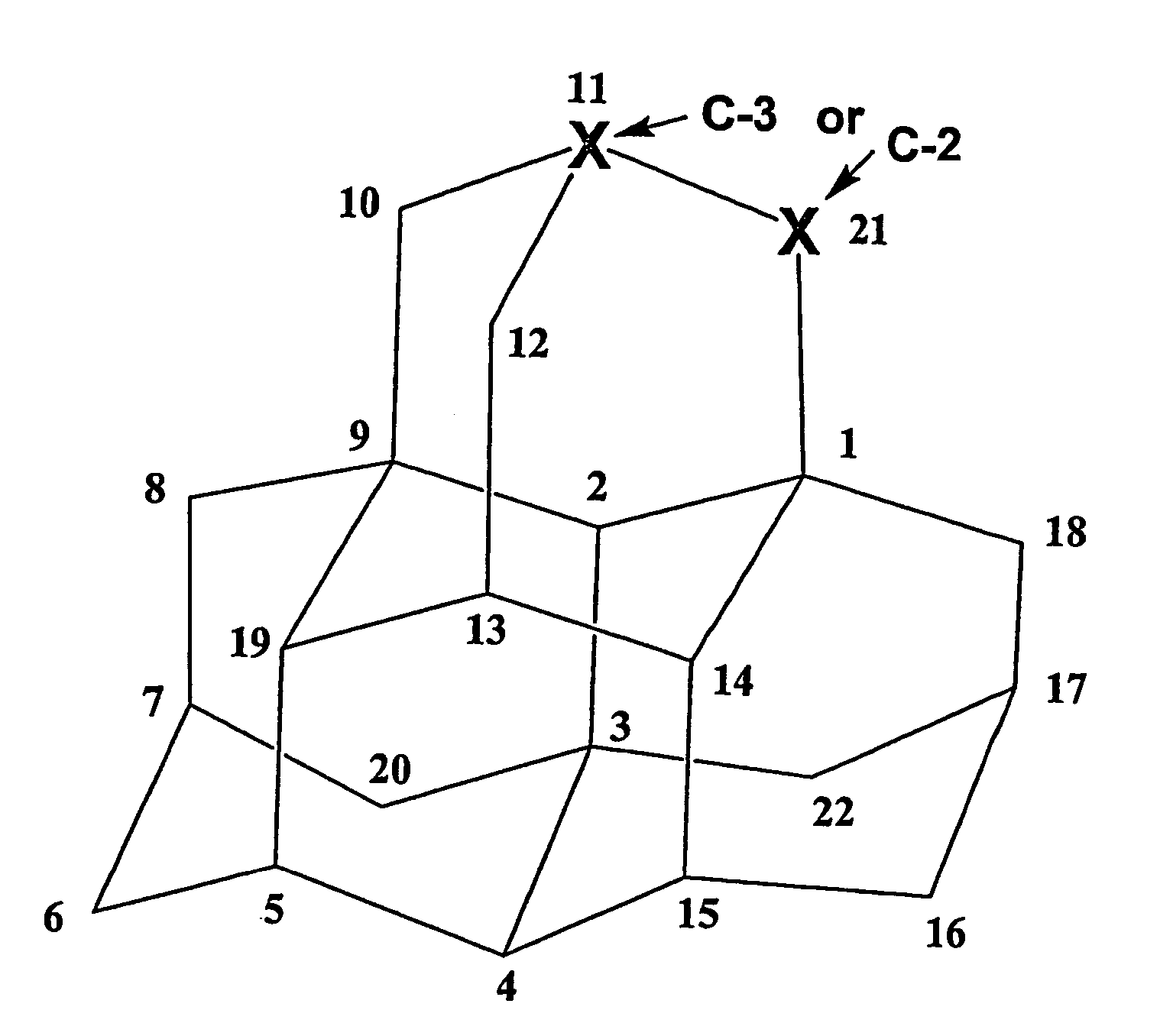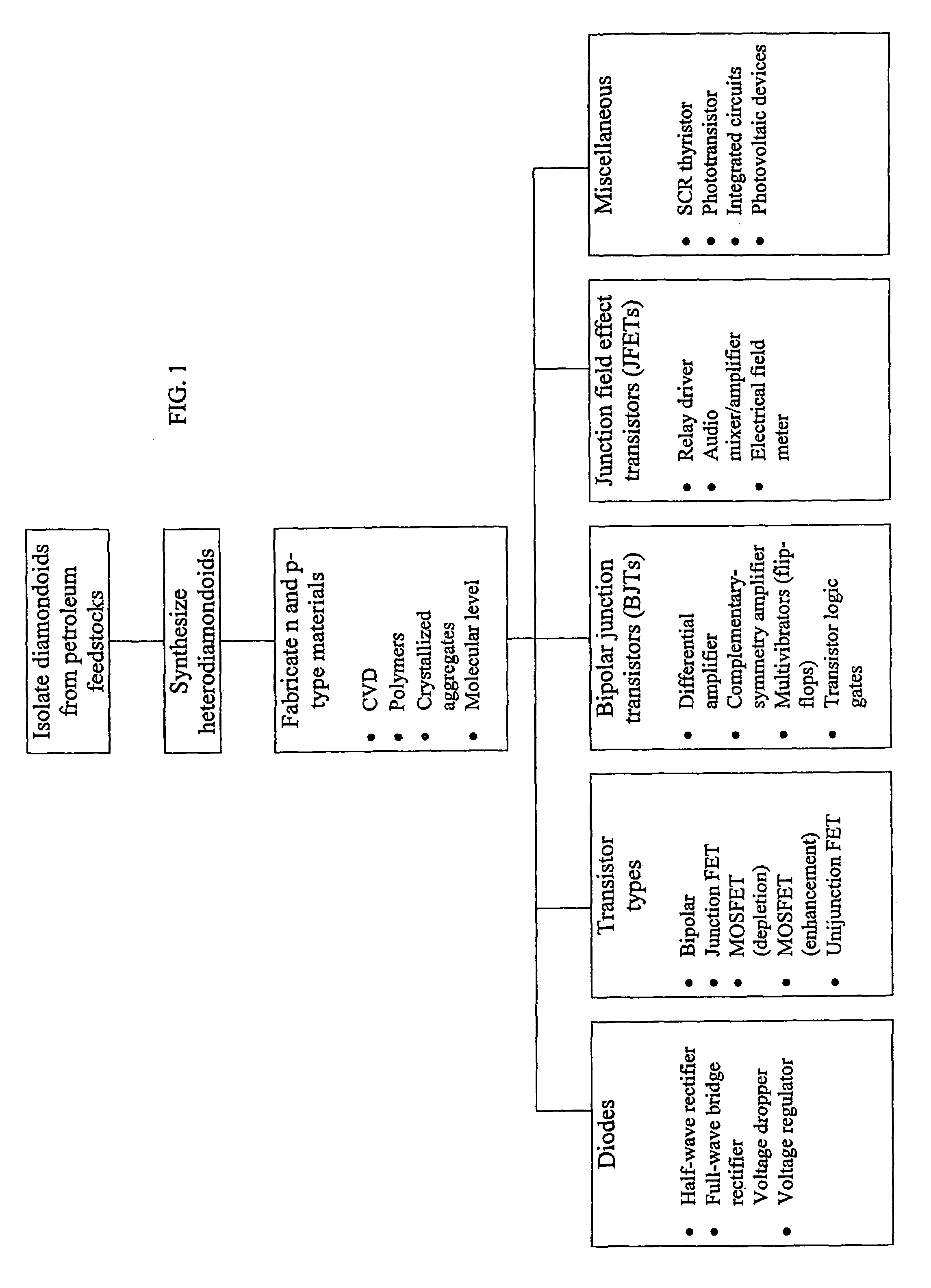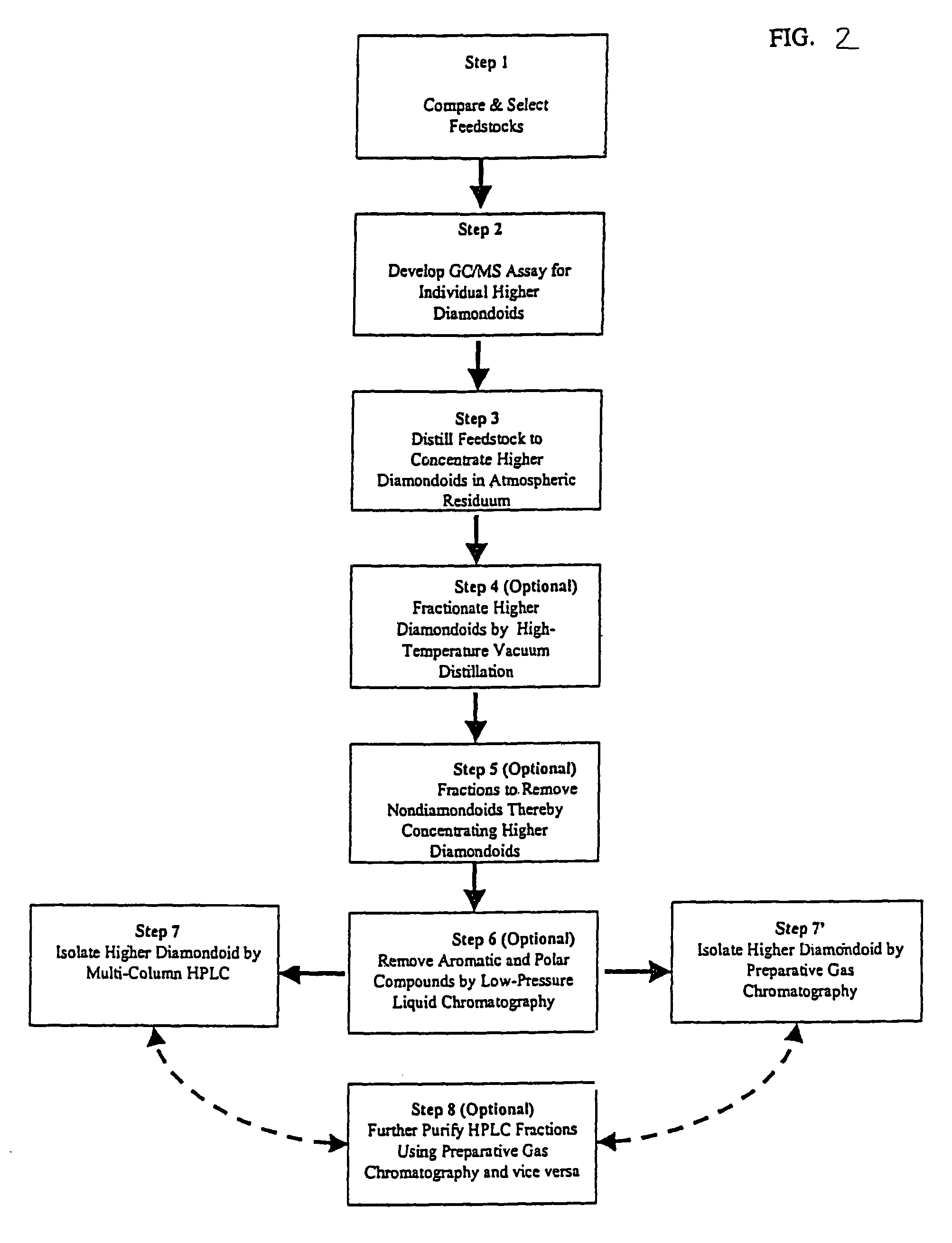Heteroatom-containing diamondoid transistors
a technology of heteroatoms and transistors, which is applied in the direction of thermoelectric devices, organic chemistry, and group 3/13 element organic compounds, etc., can solve the problems of difficult formation of ohmic contacts with this wide bandgap semiconductor, difficult to dop diamond, and extensive damage to the diamond crystal latti
- Summary
- Abstract
- Description
- Claims
- Application Information
AI Technical Summary
Benefits of technology
Problems solved by technology
Method used
Image
Examples
example 1
Aza Tetramantanes from a Feedstock Containing a Mixture of Tetramantane Isomers
[0157]In the following example, a mixture of aza tetramantanes was prepared from a feedstock containing a mixture of the three tetramantane isomers iso-tetramantane, anti-tetramantane, and skew-tetramantane.
[0158]A first step in this exemplary synthesis involved the photo-hydroxylation of a feedstock containing tetramantanes. The feedstock may be obtained by methods described in U.S. patent application Ser. No. 10 / 052,636, filed Jan. 17, 2002, and incorporated herein by reference in its entirety. A fraction containing at least one of the tetramantane isomers was obtained, and the fraction may have included substituted tetramantanes (such as an alkyltetramantane) and hydrocarbon impurities as well. The gas chromatagraphy / mass spetrometry (GC / MS) of the composition of this fraction showed a mixture of tetramantanes.
[0159]A solution of 200 mg of the above feedstock containing tetramantanes in 6.1 g of methyl...
example 2
Preparation of Aza Iso-tetramantane from Iso-tetramantane
[0165]In this example, an aza iso-tetramantane is prepared from a single tetramantane isomer, iso-tetramantane, as shown in FIGS. 5A-B. As with the mixture of tetramantanes, this synthetic pathway also begins with the photo-hydroxylation of iso-tetramantane or chemical oxidation / reduction to the hydroxylated compound 2a shown in FIG. 5A.
[0166]A solution of 3.7 mmol iso-tetramantane in 6.1 g of methylene chloride is mixed with 4.22 g of a solution of 1.03 g (13.5 mmol) of peracetic acid in ethyl acetate. While stirring vigorously, the solution is irradiated by a 100-watt UV light, and gas evolution is evident as soon as the irridation process is started. The temperature is maintained at 40-45° C. for an irradiation period of about 21-hours. The solution is then concentrated to near dryness, treated twice in succession with 10-mL portions of toluene, and reevaporated to dryness. The crude product containing a mixture of iso-tetr...
example 3
Preparation of the Aza Iso-tetramantane 6 Product by Fragmentation of a Keto Compound 1 to an Unsaturated Carboxylic Acid 7
[0176]An alternative synthetic pathway for the preparation of the product aza iso-tetramantane 6 is shown in FIG. 5B. Referring to FIG. 5B, the iso-tetramantone 1 as prepared above may be fragmented to the unsaturated carboxylic acid 7 by an abnormal Schmidt reaction per McKervey et al. (Synth. Commun., 1973, 3, 435). It is contemplated that this synthesis is analagous to that reported in the literature for adamantane and diamantane (see, for example, Sasaki et al., J. Org. Chem., 1970, 35, 4109; and Fort, Jr. et al., J. Org. Chem., 1981, 46(7), 1388).
[0177]In the next step, the compound 8 may be prepared from the carboxylic acid 7. To 4.6 mmol of the carboxylic acid 7 is added 12 mL of glacial acetic acid and 3.67 g (4.48 mmol) of anhydrous sodium acetate. The mixture is stirred and heated to about 70° C. Lead(IV) acetate (3.0 g, 6.0 mmol, 90% pure, 4% acetic a...
PUM
| Property | Measurement | Unit |
|---|---|---|
| carrier concentration | aaaaa | aaaaa |
| carrier mobility | aaaaa | aaaaa |
| ionization energy | aaaaa | aaaaa |
Abstract
Description
Claims
Application Information
 Login to View More
Login to View More - R&D
- Intellectual Property
- Life Sciences
- Materials
- Tech Scout
- Unparalleled Data Quality
- Higher Quality Content
- 60% Fewer Hallucinations
Browse by: Latest US Patents, China's latest patents, Technical Efficacy Thesaurus, Application Domain, Technology Topic, Popular Technical Reports.
© 2025 PatSnap. All rights reserved.Legal|Privacy policy|Modern Slavery Act Transparency Statement|Sitemap|About US| Contact US: help@patsnap.com



